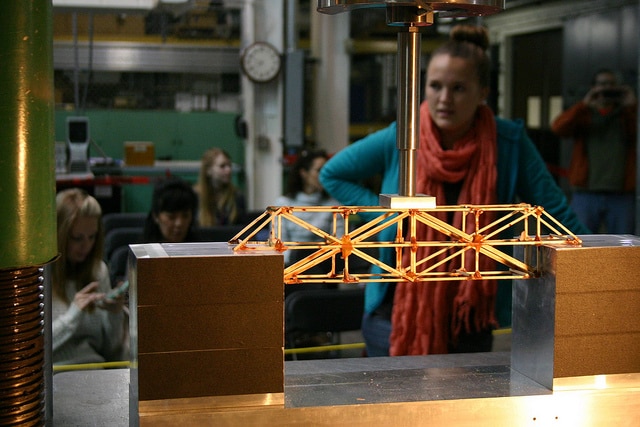Many of us have been teaching and working remotely since mid-March. It seems longer. Much longer. For the most part, we’ve mastered using the technology (except for perhaps forgetting to unmute). At the start, it was impressive how the technology worked (mostly) and great to be able to continue to work, to teach, and to connect with distant colleagues and students. At some point, probably around May or June, the long working days caught up with me and Zoom fatigue began to sink in. It hasn’t disappeared.
In semester 1, evaluations and feedback clearly demonstrated that students were extremely appreciative of the dedication and hard work of staff in transitioning rapidly to remote delivery. It would not be surprising if they too are finding it increasingly difficult to maintain their engagement in semester 2. As we begin to plan for teaching flexibly again in 2021, it seems appropriate to summarise some of the ideas and feedback from Sydney staff and students and from around the world on how to engage remote students.
What do students tell us?
Students do not focus on technology. Instead, they value teachers who are supportive and enthusiastic, and who provide clear explanations and expectations. When teachers clearly enjoy teaching and the topic, this rubs off on students. Whether learning online or face-to-face, they value learning experiences which are engaging and provide structured and regular opportunities for interaction and connection with their peers and teachers. Online teaching amplifies both good and less good learning experiences – for example, unstructured group work and excess content quickly becomes overwhelming without the structure and presence that face-to-face teaching and interaction provides.
Good teaching and learning is good teaching and learning, regardless of medium
Commencing students, in particular, need clear structures and expectations – for example, consistent approaches and use of activities, and regular feedback. Opportunities for interaction and connection are highly valued, with students relying more on their teachers to provide guidance and moments for social learning.
Learning may be virtually distant but it must not be socially distant.
Preparation aids participation
Live classes, whether delivered online or face-to-face, speed past. Students meeting complex material for the first time can quickly lose concentration and, with it, motivation. In large classes, it takes a brave student to ask for an explanation or for the lecturer to repeat a section. Live classes help bring structure and, as discussed below, can be constructed to be interactive, engaging and even inspiring. However, if students are not able to follow the content and lose focus, they are unlikely to participate in class activities. They may also stop attending. By providing content and the expectation that students will work through before the live class, students begin the class with a grounding in its topic.
Such content could be delivered via a short reading, video or even a podcast. If the material being presented is new to the students, it helps to prepare students and, by “chunking” the lecture content, frees up time in the live class for activities to further develop and explore the concepts. Preparation material can, though, also be based on assumed knowledge. This can help ensure students are all up to speed and have the opportunity to retrieve information from previous courses or earlier classes.
Motivation by mastery
Related to this is the importance of providing opportunities for students to be regularly rewarded by small experiences of success. It is difficult for any of us to keep motivation if we keep trying hard but do not get anywhere or know how we are going. Although providing opportunities in live classes and in high stakes assessments can lead to extrinsic motivation to study, the aim of small, mastery tasks is to increase self-efficacy and students’ intrinsic desire to learn.
Preparation activities are thus ideal for this. Students can demonstrate their comprehension and understanding of the preparation content through completion of small quizzes which they can attempt multiple times. Such quizzes often use multiple choice questions and are built from large question pools with distractors based on common misconceptions and feedback chosen to guide students’ understanding. Questions can be chosen for the students to show comprehension of new material, to practice the use of an important equation or technique or to reactivate prior assumed knowledge stored in memory.
Live classes
Pre-recorded videos, self-directed tutorials, regular assessment tasks, and discussion boards provide students with great flexibility to “learn anywhere, learn anytime” and they are the mainstay of many online courses. Live classes, though, provide greater structure and more closely mimic ‘traditional’ courses. They can be inspiring and provide opportunities for genuine student-teacher and student-student interaction. Professionally-produced texts and videos date can date very quickly and be very generic. The advantages of the live class is its ability to authentically interest and challenge each individual student by linking to current sources, recent news stories and local context, and by maximising opportunities for social learning.
The classes formerly known as ‘lectures’
As discussed above, delivering lots of content live via Zoom is unlikely to be satisfactory for educators or students, just as it was proving to be from the lectern. Even if the post-pandemic future is likely to involve face-to-face classes, it seems unlikely that these will involve large, traditional lectures. Instead, the best large classes will likely be those where much of the content is delivered online with the synchronous part making maximum use of the energy and opportunities for interactivity that large cohorts provide.
As outlined above, it is effective to provide preparation materials and mastery activities before each class. This frees up time and also provides students with confidence to take part in activities during class. Depending on the disciplinary context, these might involves questions and polling, worksheets, Zoom chats, breakout discussion, and shared documents/whiteboards, Polling tools are excellent for individuals to self-check their understanding but can also be used by teachers to allow students to vote and to solicit opinions. At a higher level, collaborative tools such as Google Docs, Word Online or even the Zoom whiteboard in breakout rooms can be used by students to collaboratively curate information and develop worked solutions and positions.
One strength of a large class is that it is likely that enough students will engage with activities for this to be vibrant. The teacher’s role is to provide structure and ensure that the activity is purposeful. Instructions need to be clear and regularly repeated. For example, the URLs needed for activities should be provided on screen and pasted in the Zoom chat. It is often useful to make these activities quite short. Just as a teacher would circulate around a large physical class to assist, moving between breakout rooms can ensure students keep on track. Students can be encouraged to turn on their cameras but there are many reasons why they may choose not to. It is also to be expected that some students will not participate in polls etc.
The classes formerly known as ‘tutorials’
All of the approaches and tools outlined above for ensuring interactivity in large classes are also applicable to small classes. Indeed, almost all of the class time is likely to be devoted to activities. The online tutorial is in my many quite similar to a face-to-face one in structure with tools such as breakout rooms, Padlet and Google Docs allowing collaborative group work. Although it is still important to provide guidance on timing, it is likely that students will be engaged in longer and more involved tasks, with greater time also provided for feedback and discussion. Small classes will likely provide a better opportunity for group work. Providing a consistent and even over-engineered structure for group work is vital in the online environment – asking students to elect rotating note-taker and spokesperson roles, for example.
In the full class and in breakout rooms, students can again be encouraged to turn on their cameras and to participate actively. Tutors can help to facilitate engagement through actively providing feedback and moving between breakout rooms when this is practical.
Relationship-rich experiences
Relatedness is a basic human need and being able to connect with other people is important for wellbeing, and for developing and maintaining a sense of belonging. In turn, these are strongly related to academic success. With fewer or no classes on campus, the roll of the teacher in facilitating relationship-rich experiences has been amplified. This can start by making sure the students know their teachers, perhaps with an introductory video or by using an activity such as ‘My journey‘. Many of the activities described above are also designed to ensure that students are talking to each other, and to their teachers, regularly and safely. Tools like SRES can also help personalise communication and provide additional support and guidance for students based on their success and engagement with the particular activities of the unit.
In remote teaching and learning, it is high teacher presence, care, compassion, and enthusiasm for the topics and for student success that is important. The tools are just there to enable this to happen at scale and at distance. At best, they become so ubiquitous that they become verbs. Software is quickly superseded and forgotten. The life-changing teacher is not.
Start well to ensure success
Lastly, and with 2021 in mind, it is important to start each unit strongly with activities in the first class that help build a sense of belonging and that provide scaffolded opportunities for students to talk to each other. Those commencing in 2021 will be doing so with considerable uncertainty about how and what they will study. Those returning may have quite different skills and approaches to those who did so in 2020, and will almost certainly have worries and doubts about their futures.
Tell me more!
- University of Sydney educators can access free 30 minute consultations with an educational designer – book an online consult here at a time that suits you.
- Access a practical guide about teaching during the pandemic, based on evidence and experience from around the world.
- Learn more about active learning during remote teaching.
- Plan your 2021 classes for learning in all locations.






3 Comments